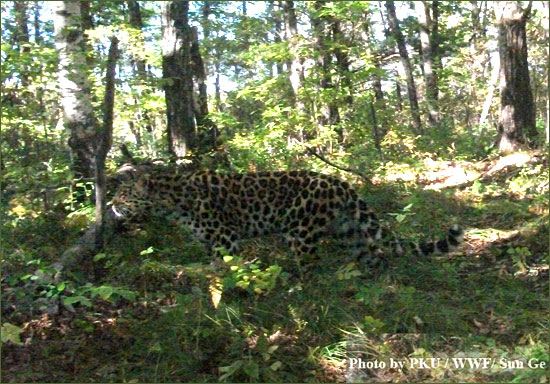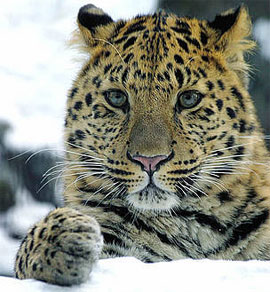Rare photo of Amur newspaper in China
Two clear pictures of Amur newspaper in northeastern Jilin province have just been published, after 62 years Chinese researchers have not had such an image.

Amur newspaper images automatically recorded by infrared cameras on September 19.
(Photo: PKU, WWF, Sun Ge)
The image of Amur, one of the most endangered animals in the world, is recorded in a forest in Yanbian, Xinhua quoted Sun Ge, a graduate student at Peking University. Mr. Sun is the one who installs automatic infrared cameras in the forest mentioned above, to obtain the image of Amur newspaper.
Sun and his assistants installed about 40 cameras three months ago. They went back to taking the photos every 20 days. On September 19, one of the cameras captured the image of Amur newspaper in Uong Thanh district, bordering Russia and Korea. Mr. Sun's work is part of a field research project, co-financed by the Forest Management Authority of Jilin Province and the International Fund for Nature Protection (WWF).
 The capture of the accompanying photo found Amur's footprints to prove that Wang Qing was a good environment for this animal, said animal conservation professor Jiang Guangshun of Northeastern Forestry University. A conservation area in Uong Thanh will play an important role in protecting the living environment for Amur newspaper.
The capture of the accompanying photo found Amur's footprints to prove that Wang Qing was a good environment for this animal, said animal conservation professor Jiang Guangshun of Northeastern Forestry University. A conservation area in Uong Thanh will play an important role in protecting the living environment for Amur newspaper.
Chinese border guards on April 13 took some pictures of Amur newspaper in the Hon Xuan Nature Reserve in Dien Bien. However, the Amur newspaper photographs taken on September 19 are the first time Chinese scientists have done this since 1949.
The number of Amur newspapers living in nature is thought to be no more than 50 individuals, with about 10 in China. This number is summed up from interviews with researchers, since there is no systematic field study of this rare animal that has ever been done in China. Amur newspaper once distributed in many areas, but today this species has narrowed its habitat due to lack of food. The cause of this is environmental damage as well as illegal hunting.
- Rare leopards in China
- Amur the Tiger has escaped extinction
- 19th century China through rare photos
- Amur's tiger reappeared in China
- 2010: Each month has a rare creature
- Like a cheetah to hunt
- Single photo of newspaper gepa
- 10 most dangerous animals on the planet
- China: First time grabbing a snow leopard photo
- Printed newspapers turn into flower beds in Japan
- China uses Japanese technology for rare earth production?
- Why does China restrict rare earth mining?
 Animal 'suffering' after hibernation
Animal 'suffering' after hibernation Why do goats climb well?
Why do goats climb well? Scientists were surprised to see chimpanzees eating turtles
Scientists were surprised to see chimpanzees eating turtles Giant catfish died deadly due to drought in Thailand
Giant catfish died deadly due to drought in Thailand